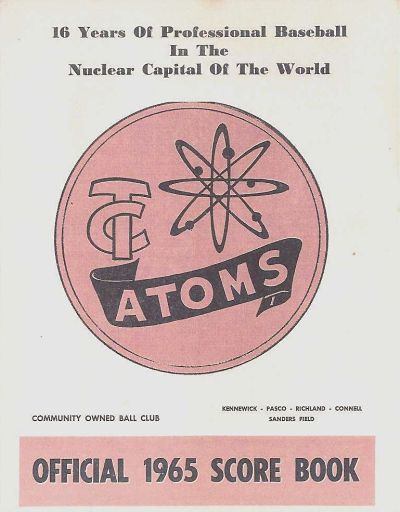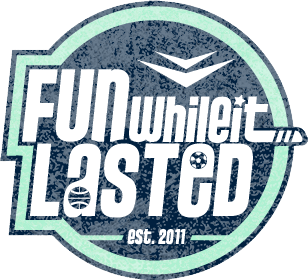Tombstone
Born: 1965
Folded: November 1968
First Game: April 23, 1965 (W 4-2 vs. Yakima Braves)
Last Game: September 2, 1968 (L 6-1, W 3-1 vs. Eugene Emeralds)
Northwest League Champions: 1965, 1966 & 1968
Stadium
Ownership & Affiliation
Owners: Tri-Cities Sports, Inc. (Harry Alden, et al.)
Major League Affiliations:
- 1965: Baltimore Orioles
- 1966-1968: Los Angeles Dodgers
Attendance
Editor's Pick
Dalko
The Untold Story of Baseball’s Fastest Pitcher
By Bill Dembski, Alex Thomas & Brian Vikander
What the Washington Post called “baseball’s greatest what-If story” is one of a superhuman, once-in-a-generation gift, a near-mythical talent that refused to be tamed. Gripping and tragic, Dalko is the definitive story of Steve “White Lightning” Dalkowski, baseball’s fastest pitcher ever. Dalko explores one man’s unmatched talent on the mound and the forces that kept ultimate greatness always just beyond his reach.
When you make a purchase through an affiliate link like this one, Fun While It Lasted earns a commission at no additional cost to you. Thanks for your support!
FWIL FAVORITE
Background
This second edition of the Tri-City Atoms baseball team represented the cities of Kennewick, Richland and Pasco, Washington in the Northwest League during the mid/late 1960’s. An earlier Tri-City entry in the Northwest League was also named the Atoms during the summer of 1961.
The team derived its name from the region’s proximity to the Hanford Site, the infamous top secret U.S. government plutonium production facility of the Manhattan Project, which created the nuclear material used in the atomic bomb dropped on Nagasaki in August 1945. Between 1944 and 1963, nine nuclear reactors were erected at the Hanford Site, though the earliest reactors were already getting decommissioned by the mid-1960’s.
The Atoms’ feat of winning three league titles in their four-year existence was rendered somewhat less remarkable by the fact the the Northwest League consisted of just six members clubs in 1965 and only four from 1966 to 1968.
In Competition
Like the original 1961 edition of the Atoms, the 1965 Atoms were a farm club of the Baltimore Orioles. Cal Ripken Sr. managed the 1965 Atoms club to a 2nd place finish with a 81-58 record. The Atoms swept the first place Lewiston Broncs in three games in the Northwest League playoff.
Baltimore departed (again) after the 1965 season and the Los Angeles Dodgers took over as the Atoms’ parent club for a three-year run beginning in 1966. Ex-Dodgers star and future Hall-of-Famer Duke Snider managed the ball club during the summer of 1966.
Future Major League stars who played at Sanders-Jacobs Field during the Atoms era included:
- Outfielder Dave May (Atoms ’65)
- Catcher Ted Sizemore (Atoms ’66)
- Pitcher Doyle Alexander (Atoms ’68)
- Third baseman Ron Cey (Atoms ’68) was the MVP of the 1981 World Series for the Dodgers
Sizemore, who played catcher for the Atoms as a 21-year old in 1965, later converted to an infielder and won the National League Rookie-of-the-Year Award as a second baseman for the Dodgers in 1969.
In 1965, 26-year old Steve Dalkowski returned to Tri-City. Dalkowski was a legendary minor league pitcher, often cited by players of the era as the hardest thrower they ever saw. Dalkowski played for the original version of the Atoms back in 1961 as an Orioles prospect. By 1965 control problems and injuries had derailed him and this would be his final season of pro baseball. Dalkowski’s mythology would surge in the 1980’s when Bull Durham writer-director modeled the character of Nuke Laloosh after him.
Roy Gleason
Perhaps the most remarkable player to don the Atoms jersey was 23-year old outfielder/first baseman Roy Gleason. Unusual among players in the Class A Northwest League, Gleason had already played in the Majors. In fact, he had a World Series ring from his September call up to the Dodgers as a 20-year old in 1963. Like Moonlight Graham in W.P. Kinsella’s supernatural baseball novel Field of Dreams, Gleason enjoyed a single Major League plate appearance during his call-up in late 1963. Unlike Graham, Gleason got a hit, lashing a double for a 1.000 lifetime Major League batting average.
In 1966, Gleason led the Atoms in home runs (16) and RBI (48) as the club won a second consecutive Northwest League title, and Tri City’s first as a Dodgers’ farm club.
The following spring, in training camp with the Dodgers in Florida, Gleason received his draft notice. Sent to the front lines with the 9th Infantry Division, he suffered shrapnel wounds to his calf and arm from an improvised explosive device in July 1968. Evacuated to the U.S. to recuperate, he lost his World Series ring which he kept in his Army foot locker in Vietnam. Gleason received a Purple Heart from his combat injuries, which ultimately short-circuited his effort to rekindle his baseball career.
Bill Plaschke’s 2003 profile of Roy Gleason in The Los Angeles Times is a wonderful read.
De-Commissioned
The Northwest League The Oakland A’s replaced L.A. as Tri-City’s Major League sponsor and the team dropped the Atoms moniker and became the Tri-City A’s for the 1969 season.
After the demolition of Sanders-Jacobs Field in 1975, the Northwest League departed the Tri-City region for most of the 1980’s and 1990’s. But the Pasco-based Tri-City Dustdevils have been a fixture in the league since 2001.
At the time of this writing, both the Dustdevils’ and the Northwest League’s future is in doubt amidst Major League Baseball’s plan to downsize and reconfigure Minor League Baseball ahead of the 2021 season.
In 2016, NBC News dubbed the Hanford Site “the most toxic place in America” with over 56 million gallons of chemical and nuclear sludge slowly leaking from underground storage tanks.
Tri-City Atoms Shop
In Memoriam
Manager Cal Ripken Sr. (Atoms ’65) died of lung cancer on March 25, 1999. Ripken was 63 years old. New York Times obituary.
Manager Don LeJohn (Atoms ’67-’68) died on February 25, 2005 at age 70.
Manager Duke Snider passed away at age 84 on February 27, 2011. Los Angeles Times obituary.
Outfielder Dave May (Atoms ’65) passed away after battling cancer on October 20, 2012 as the age of 68. New York Times obituary.
Pitcher Steve Dalkowski (Atoms ’65) died of COVID-19 complications on April 19, 2020 at age 80. New York Times obituary.
Links
##



